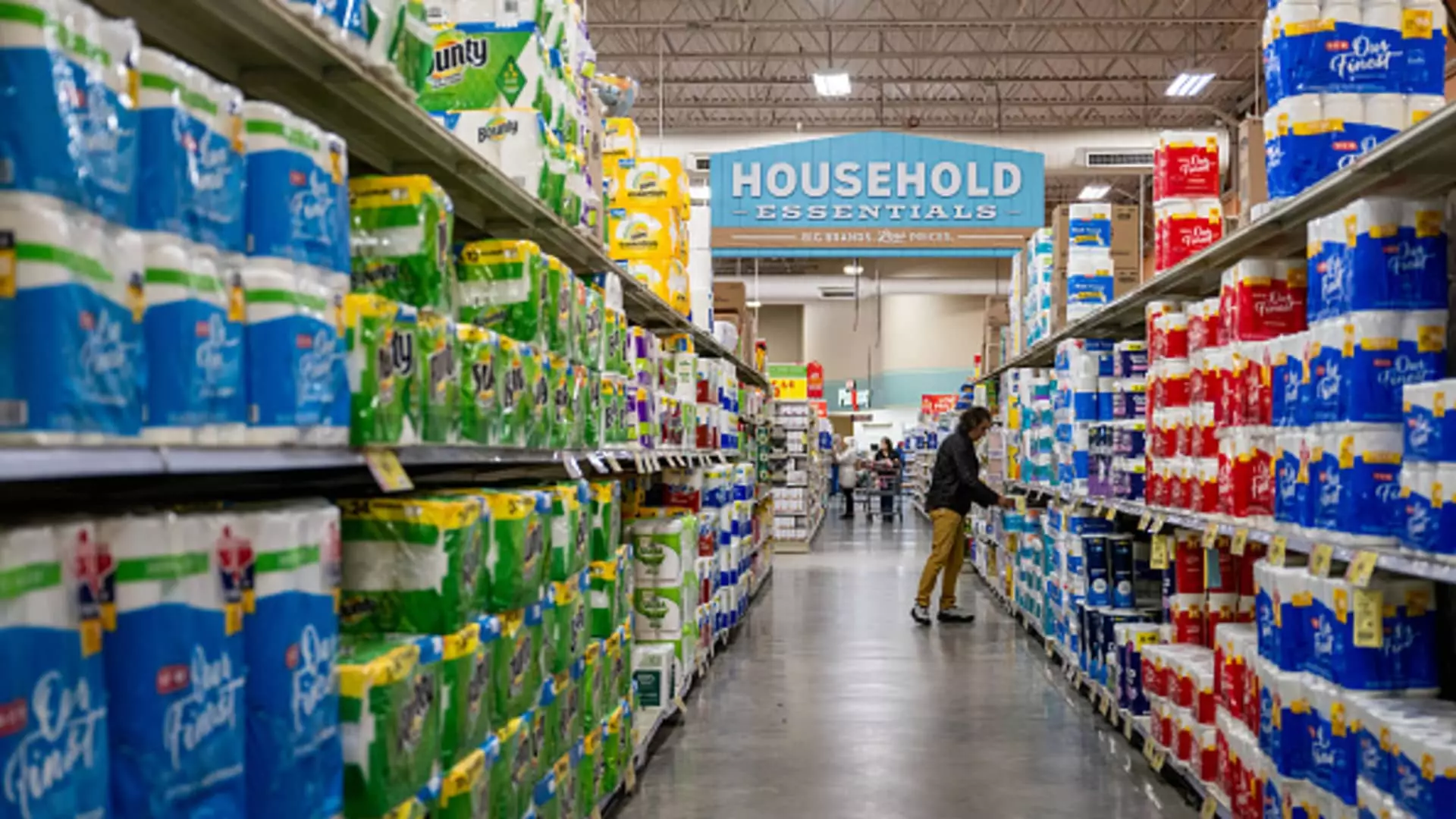As America navigates the churning waters of global trade, the Trump administration’s imposition of tariffs marks a pivotal, yet troubling strategy aimed at revitalizing domestic industries. Intent on enforcing an “America First” trade policy, the administration’s decision to elevate tariffs on a plethora of goods imported from over 180 countries may seem to promise a robust domestic market. However, the practical implications for the average consumer are alarming. Basic necessities like coffee, bananas, vanilla, and even toilet paper are set to witness significant price hikes—not exactly the American dream envisioning prosperity and accessibility for all.
The very fabric of daily American life is woven with the threads of these goods, yet the notion of “patriotic purchasing” falls flat when the reality sets in: many essential ingredients and materials simply cannot be sourced domestically. The Consumer Brands Association, a trade group representing some of America’s most prominent corporations, points out the irony in this quest for self-sufficiency. What begins as a noble ambition swiftly devolves into a precarious balancing act, where typical consumers become collateral damage in a misguided effort to reclaim manufacturing jobs.
Bananas, Vanilla, and the Cost of Overreach
Let’s delve into a few specific examples—coffee and bananas, staples that occupy a cherished place in American households. According to data, the U.S. is the world’s leading importer of bananas, with a substantial portion arriving from Guatemala, a country now facing a 10% tariff. Similarly, vanilla, already notorious for its soaring prices, will see tariffs soar to a staggering 47% on imports from Madagascar. This situation illustrates a crucial point: while the tariffs are designed to pressure foreign suppliers, they inadvertently threaten the affordability of fundamental goods used in homes across the United States.
This is not merely an economic challenge; it’s a social one. Middle-class families already struggling with inflation are ill-equipped to absorb additional costs from these tariffs, which will soon resonate through grocery aisles and household product shelves. Isn’t it ironic that an initiative designed to restore American pride and jobs might instead lead us to pay more for our morning coffee and essential toiletries?
A Fragile Domestic Supply Chain
Importantly, the impacts of these tariffs transcend just those staple items. The culinary world, too, is at stake as increases in the cost of spices loom. The Consumer Brands Association argues that America’s agricultural system has experienced a fundamental shift over decades, now incapable of supplying growing consumer demand for specific crops, including oats—over 90% of which are sourced from Canada. Tariffs don’t just create immediate cost issues; they expose structural vulnerabilities in our supply chains that may take years to rectify.
Even more concerning are the everyday products in our households, including toilet paper and lotions, which could see steep increases in prices as manufacturers look to pass on production costs associated with imported materials. The ramifications of these tariffs extend well beyond initial pricing, stirring potential instability within sectors that underpin vital consumer needs.
The Investors’ Dance: A Disconnect from Reality
Upon analyzing the ripple effects of tariff strategies, one can’t help but notice the disconnect in how investors react to these fluctuations. While stock prices for companies in the consumer staples sector saw a modest uptick—perhaps reflecting a shift towards purchasing stable goods—this short-term gain masks a more troubling reality. The resilience of stock values within these industries comes at the expense of consumers who will pay the price through inflated costs, further exacerbating societal inequality.
Investors might revel in the fleeting safety of household staples, but the benefits do not trickle down to the consumer. Rather than securing a better economic future for everyday Americans, the ramifications of these policies could entrench existing challenges, squeezing those at the bottom of the economic ladder while offering little comfort to the middle class.
In considering all of these aspects, one can only conclude that while the intent behind the tariff policy may stem from a desirable wish to revive American jobs, the ensuing financial repercussions threaten to undermine the very fabric of American consumer society. Wouldn’t a more cooperative approach offer a pathway to enhancing domestic production without penalizing consumers already groaning under the weight of escalating costs? The disconnect is evident, and it’s high time for a reevaluation of these policies.


Leave a Reply